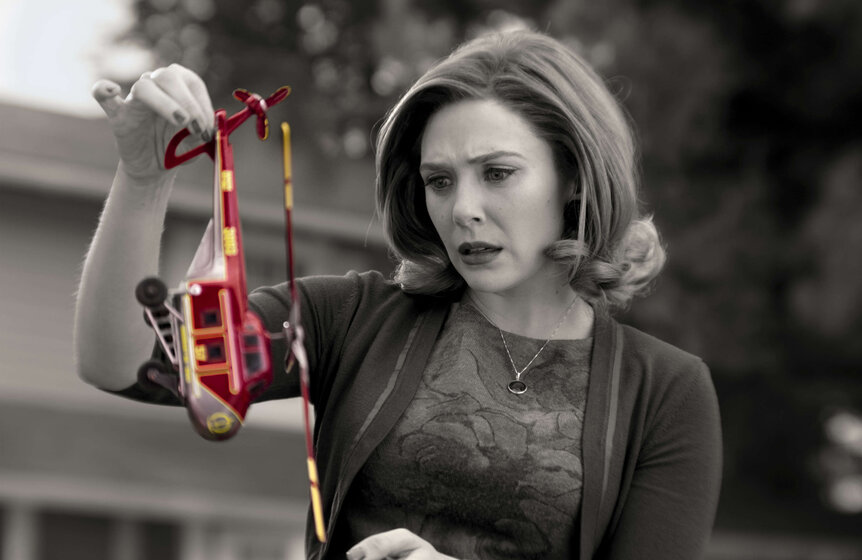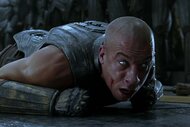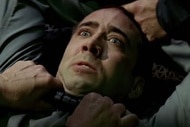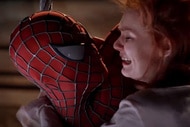Create a free profile to get unlimited access to exclusive videos, sweepstakes, and more!
Scarlet Witch is more than just a code name: The empowering meaning behind Wanda's moniker
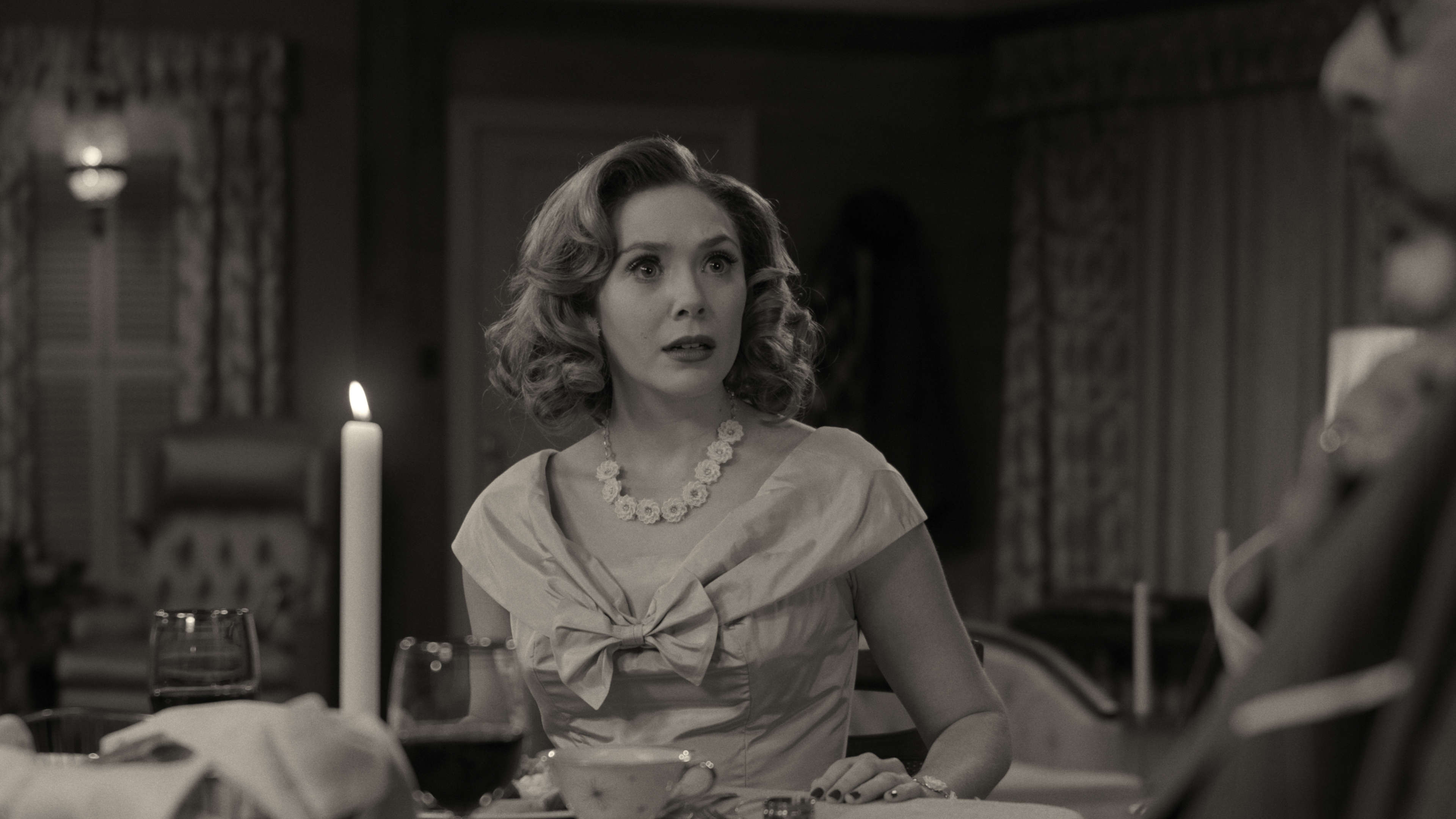
Wanda Maximoff and her robo-synthetic beau, Vision, are launching a whole new season for the Marvel Cinematic Universe in WandaVision. The new Disney+ show follows Wanda (Elizabeth Olsen) after the events of Avengers: Endgame, as she lives out her suburban dreams with Vision (Paul Bettany) and their reality-warping misadventures, akin to the infamous House of M (2005-2006) comics series. The show, a long-awaited return to the MCU after an 18-month break, gives us the opportunity to explore who Wanda and Vision are and what their backgrounds were in a much deeper way than the movies ever allowed for. However, while most fans have a loose understanding of how these characters came to be, they may not often think about their names and what they mean.
Wanda has been known as "The Scarlet Witch" since her 1964 debut in The X-Men #4, but none of her fellow Avengers — or anyone else, for that matter — call her that in the MCU. Perhaps that's partially because the "Scarlet Witch" mantle is more than just a code name. Recent comics have revealed that the title is, in fact, her birthright and something that's been passed down to her through generations. James Robinson's 2016 Scarlet Witch solo comic series retconned her origin, effortlessly weaving the pieces of her past together to create a new and harmonious background for The Scarlet Witch that speaks to the importance of heritage and self-empowerment through a history of witchcraft in different cultures.
OLD BEGINNINGS RETOLD
Many people may not know this about The Scarlet Witch because of her puzzling origin story, but she is actually not a mutant — at least not anymore. Her once-canon mutant origin has even left her title as a "witch" to be disputed by some comics fans. Although it is true that she was born with the ability to manipulate magic, according to Robinson's new version of her origin, it was not because she was a mutant, as it was originally written in David Michelinie's The Avengers in 1979.
In Robinson's retelling of her infanthood, Wanda and her twin brother, Pietro, were born with innate magical abilities but were kidnapped by the High Evolutionary — a mad scientist hell-bent on experimenting with evolutionary genetics — who augmented her powers. However, Wanda's latent aptitude for magic comes from her mother, her mother's mother, and a long line of witches and warlocks who don deep red capes and wield mystical powers that manifest as red, glowing auras. The clearly unethical experiments made Wanda into a more powerful and potent conduit of magical energies, to the point where she'd eventually be able to warp reality to her whim. (Hello, WandaVision?) At one point in the comics, she was even named as a "Nexus Being," which is the focal point of all magical energies in the universe, and was a candidate to be the next Sorceress Supreme, à la Doctor Strange, before the break in her mental stability.
Their adoptive parents, Marya and Django Maximoff, took the twins in once the experiments were done. This couple turned out to be the sister and brother-in-law of Natalya Maximoff, Wanda and Pietro's birth mother, and they belonged to a group of nomadic Romani mystics. Natalya, we learn, was The Scarlet Witch before Wanda and she died trying to get her children back from the High Evolutionary. Other magically imbued beings such as her self-proclaimed archnemesis in the series, The Emerald Warlock, or other witches like August Wu of the Coral Shore and Señor Violeta, also have an eccentric color attached to their ancestral lineage.
DEEPER THAN RED
When she first appeared in comics panels, Wanda's powers were described as the ability to use magic to manipulate probability fields so that unlikely events would happen, giving her opponents "bad luck." Robinson's version of her origins explains that in Romani culture, the color red is typically considered bad luck, but the Scarlet Witches embraced the hue, redefining it as bad luck for whoever stood against them. Hidden between the lines, there is cultural symbolism, which speaks to the erasure of the Roma and the oppression of women.
Many Romani people across the world have historically hidden their identities as a form of survival to evade persecution in the real world. But in comics, Wanda uses her culture and heritage, as well as the infamy from her past mishaps, as a source of pride for herself and to instill fear or uneasiness in her enemies. As Wanda continues to unravel the mystery behind the ailments of witchcraft itself throughout the Scarlet Witch series, Robinson uses real-world events and different cultures throughout the world to show how witchcraft has been used to demonize women and different ethnic groups for centuries. In contrast, the history of the art of witchcraft for women in the Marvel Universe is highlighted as a tool of autonomy and agency for Wanda as she discovers her own lineage and restores witchcraft to its former glory.
Ultimately, while red can be interpreted as a marker of infamy, salaciousness, or "bad luck," it becomes a symbol of pride, power, and fearlessness for Wanda and all the Scarlet Witches before her. This is what makes the name of The Scarlet Witch a revered emblem in the comics.
BEYOND A CODENAME
Wanda's previous MCU appearances have given us a basic foundation of her origins — torture and experimentation, as well as deep tragedy and loss — but we have yet to see The Scarlet Witch as a fully realized character. WandaVision gives us the opportunity to understand who she is as a character outside of being another hero on the Avengers roster, and the impact of the traumatic sacrifices that come along with it. Her story serves as a reminder to all of us that we may not always be the heroes in the eyes of others or even our own eyes, but the journey to self-discovery in the face of adversity is what defines a true hero. Most importantly, this new chapter in her origin sees her embrace her true purpose as "The Scarlet Witch."
The title goes far beyond a name given to a superhero in order to identify them in the field. It represents the strength behind what is perceived to be imperfect and uninhibited. Wanda's journey to embracing her title despite the negative associations attached to her ancestral culture and her past echoes across the human experience. Wanda's transparency with her mental health, her journey to find her heritage, and her quest for self-empowerment also shows us that there is power in vulnerability — in being seen as imperfect. Perhaps that's something many of us can relate to as we navigate a COVID-19 world isolated from our loved ones and ruled by blue screens.
More of us are like Wanda than we would care to admit. Not all of us can be Captain Americas or Iron Mans, because societal norms force people who have otherized identities to be defined by their pasts. However, we are the Scarlet Witches who descend from intersections of institutional oppression, personal misfortunes, and generational trauma, but rise above them regardless and embrace who we are. Unfortunately, the Wanda we've seen in the MCU movies does not have the same ethnic background or ties to cultural oppression that the character does in the comics, but WandaVision marks the franchise's first serious efforts to explore what her difficult past and experiences, different though they may be, have made her. Regardless of the exact circumstances, WandaVision offers the chance that Wanda will finally embrace her title as The Scarlet Witch, with all the symbolism that entails.
The views and opinions expressed in this article are the author's, and do not necessarily reflect those of SYFY WIRE, SYFY, or NBCUniversal.
